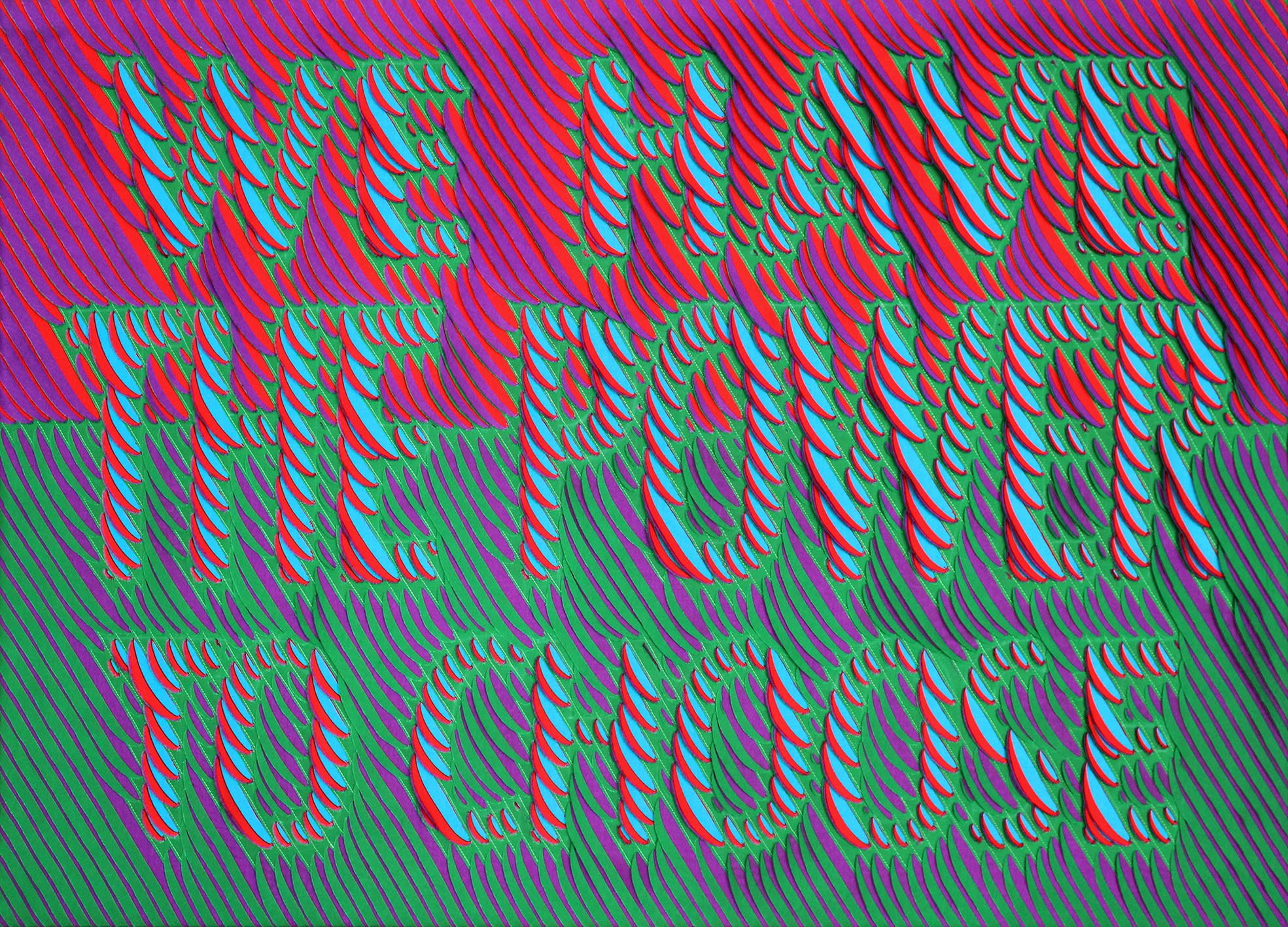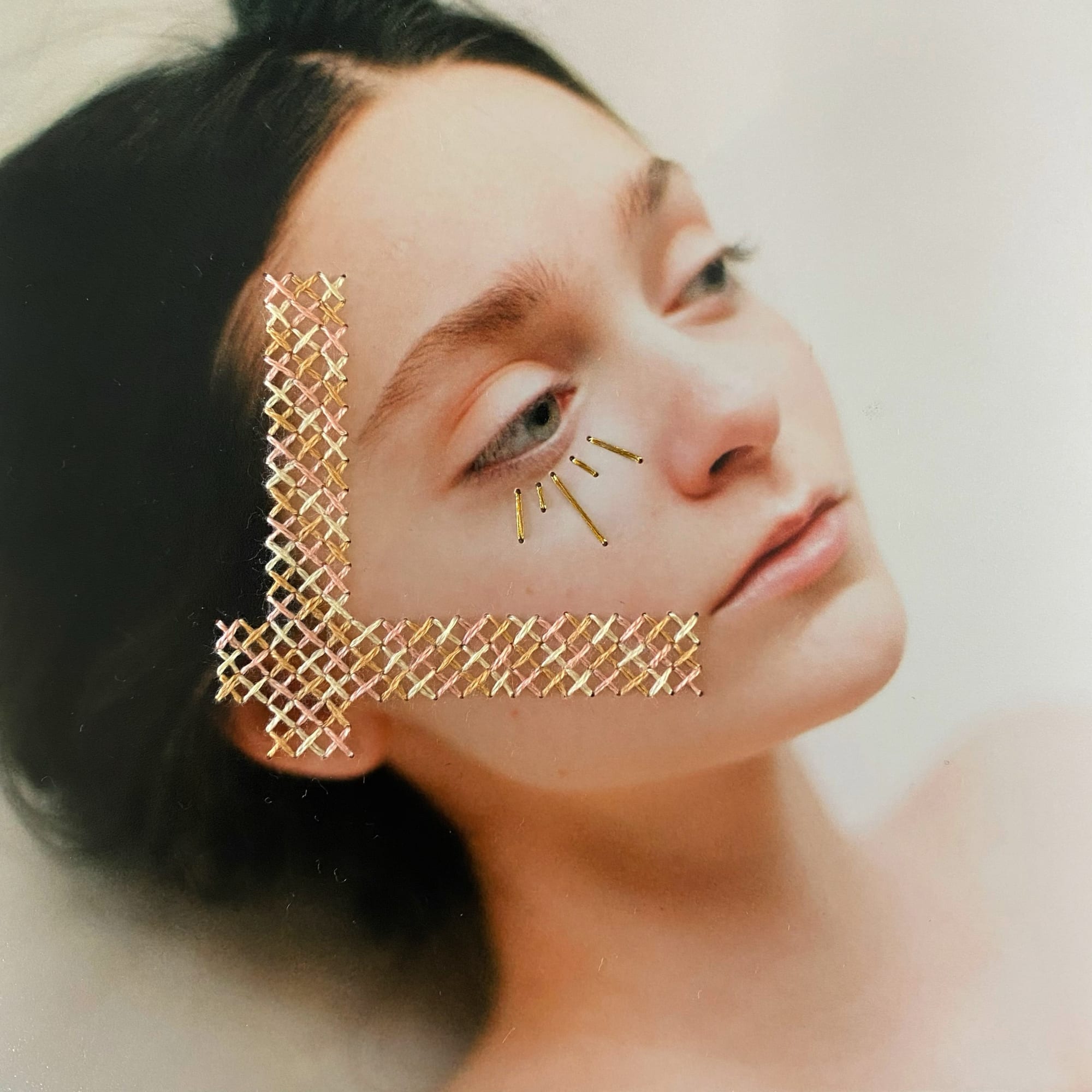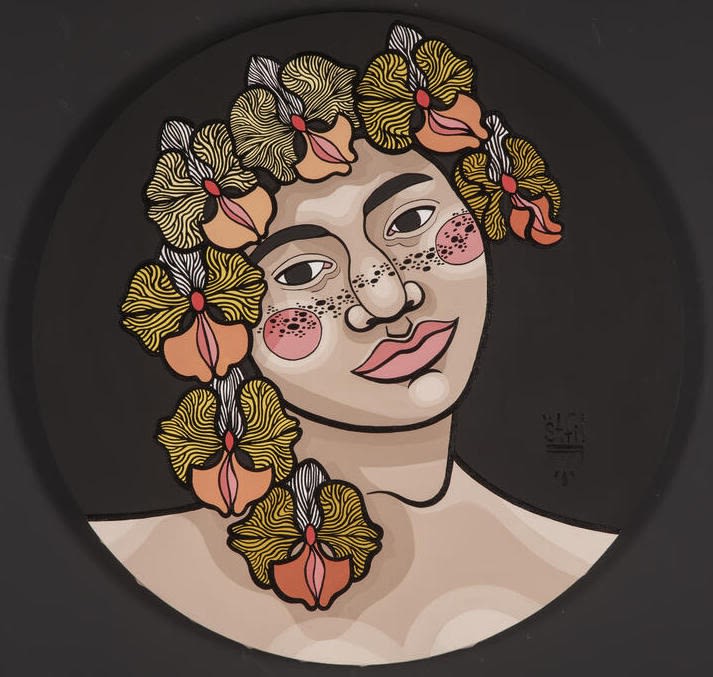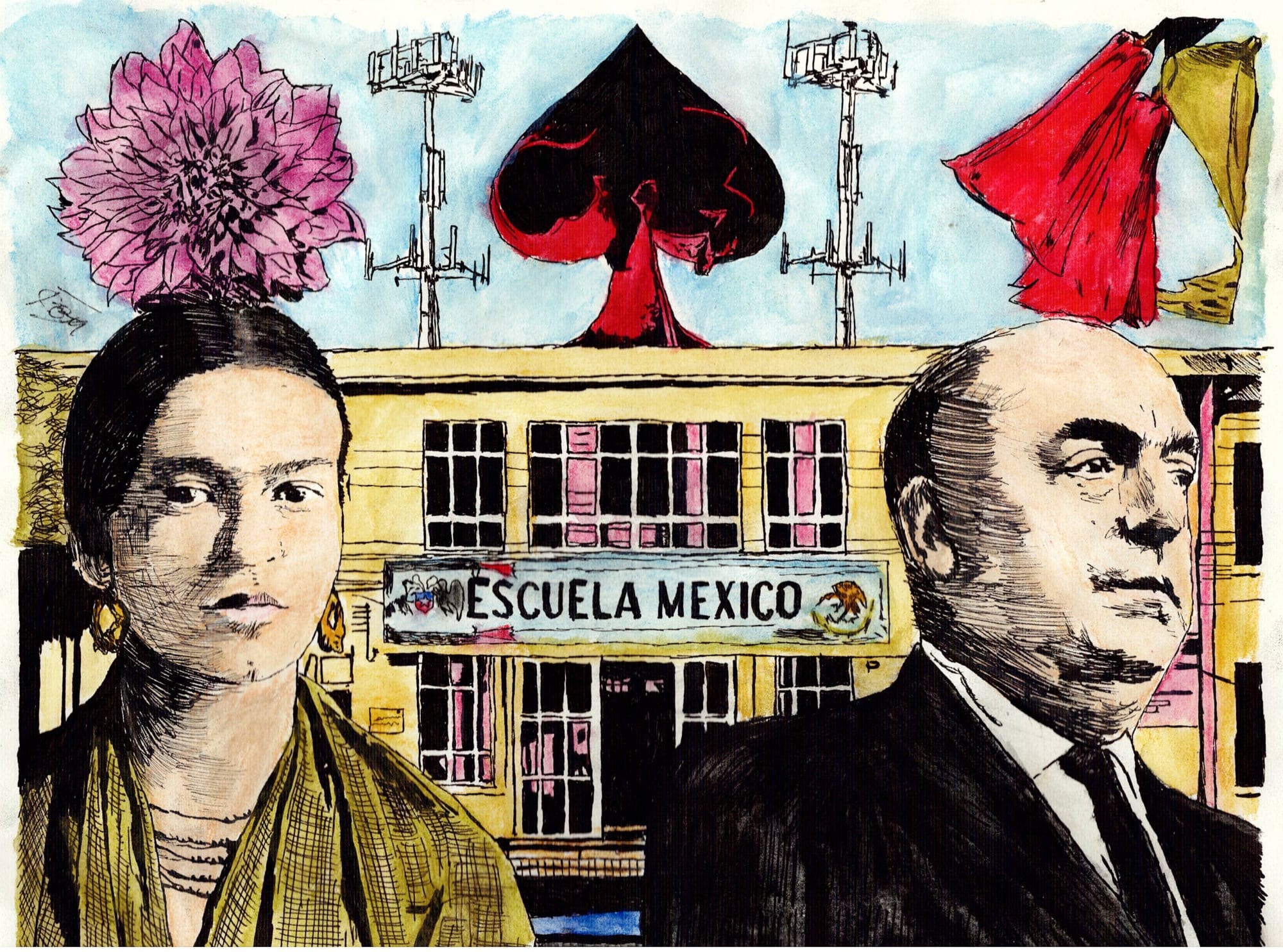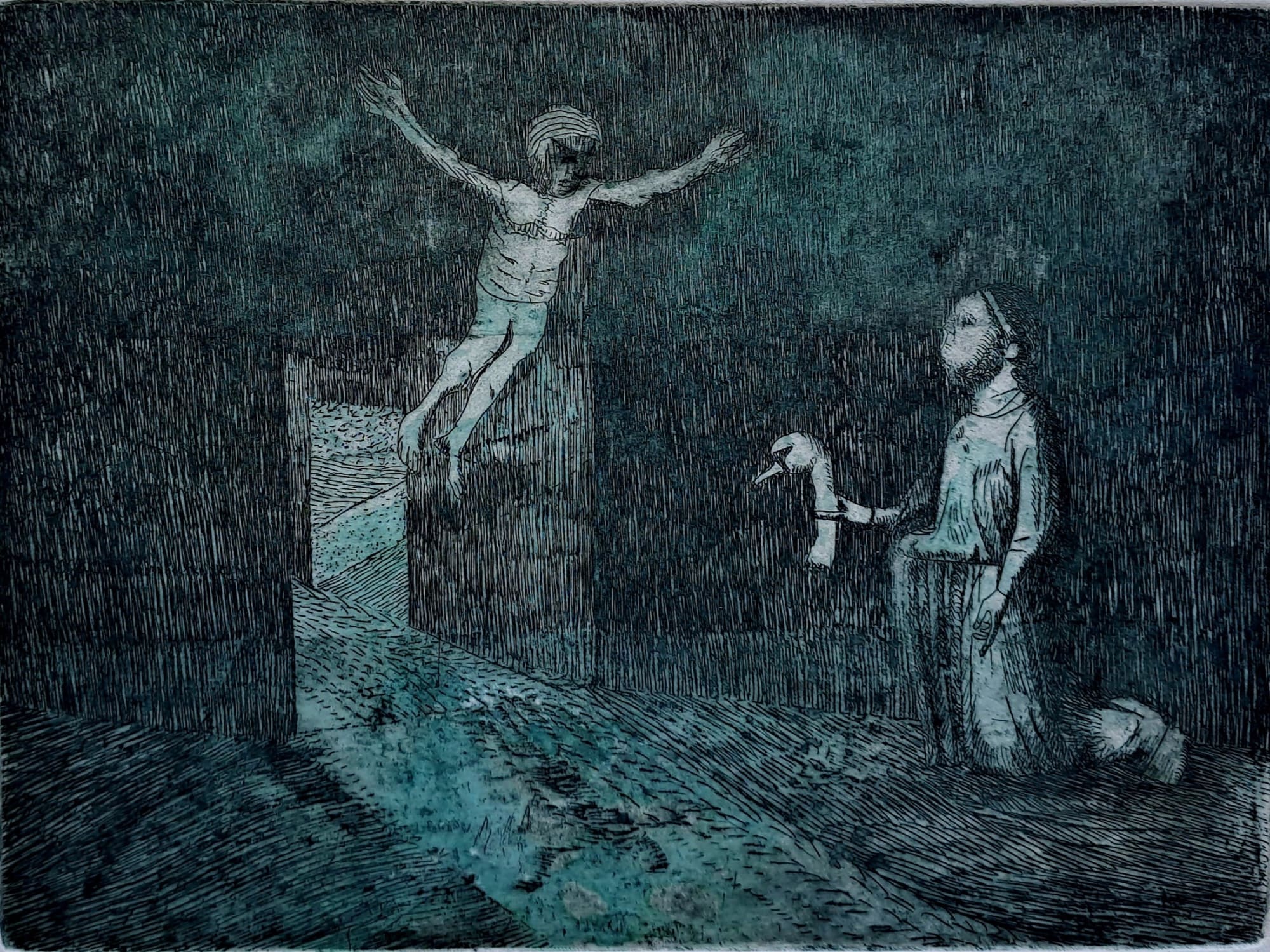The memory of a continent lives within the art of its people
Our gallery carries fragments of the latin american spirit contained in the works oF our artists
like a blast of emerging talents expanding to the world
-
NEW CODES IN MURALISM
Santiago Castro in Quito's Labrador underground stationIn the bustling world of urban transportation, where the hustle and bustle of daily life meets the monotony of underground platforms, a remarkable movement is underway. Cities around the globe are turning their stations into vibrant galleries, transforming the mundane commute into an artistic experience and reshaping our perceptions of public spaces.
Nestled within the heart of Quito lies a captivating sight that transcends mere transportation infrastructure; it's a fusion of culture, diplomacy, and creativity. Tucked away within the El Labrador metro station stands a testament to the power of commissioned art in public spaces - a vivid mural that narrates a story of collaboration and unity.
Crafted by the skilled hands of artists Yurika, Raúl Ayala, and Santiago Castro Wordbta, the mural serves as a beacon of artistic expression. Yet, it's not just their individual talents that illuminate the scene; rather, it's the collaborative effort of these artists, plus the production of Vertigo Graffiti, that has shaped this amazing work of art.
This masterpiece didn't simply emerge spontaneously. It was conceived during a bi-national meeting between Colombia and Ecuador in November 2023, orchestrated by the Colombian Ministry of Foreign Affairs and the Colombian Embassy in Ecuador. Working closely with the Secretariat of Culture of the city of Quito, these entities brought to life the vision of a mural that would transcend national borders and cultivate a sense of unity.
Latin America has a tradition of community. The Andean cordon activates like a magnet not only its inhabitants through the incessant migratory flows but also mobilises the social mission of its artists who, particularly through muralism, have managed to establish a sort of timeline of social changes.
This artistic expression, historically associated with the revolutionary periods of the early twentieth century, remains in the retinas of Latin American society, witnessing in this new century of the digital era a huge resurgence of new and brilliant exponents in all the continent's cities.
This powerful way of uniting the community by exalting craftsmanship, ethnic diversity, multiculturalism, and especially the pride of the working classes, transcends the canvassing sense with which Latin American muralism was categorised in the history of art.
Today again, this common voice transformed into a chromatic roar echoes the social feeling of a community, in a strategic place of the bustling movement of passers-by, a place where thousands of Quiteños manage every day to exchange glances and reflect on their daily life.
If you ever find yourself strolling the streets of Quito, take a moment to stop at the El Labrador metro station. Amidst the busy and hectic urban life, you'll discover a mural that stands as a testament to the transformative power of art in public spaces
